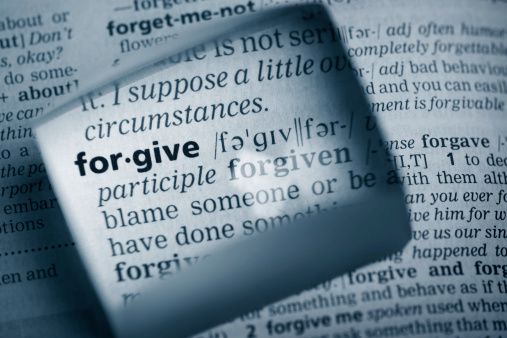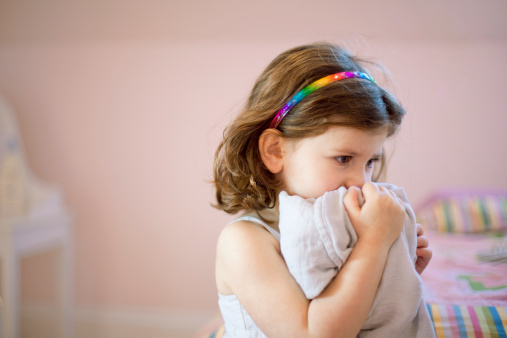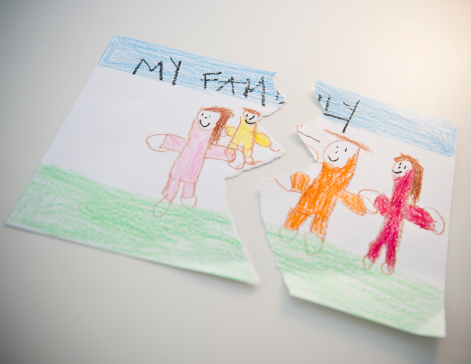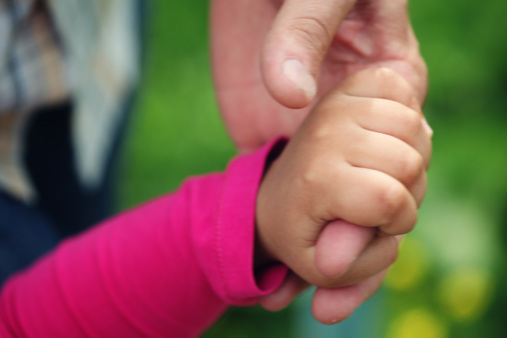 Married, separated, or divorced alike, it’s hard not to feel anxious about the upcoming holiday season. Whether you love it or are dreading it, the 2015 holiday season is just around the corner. Maybe you are feeling that there is no way you are going to get through this year with your emotions in check. You are not alone. Whether you are feeling anger, sadness, grief, frustration, anxiety, etc. it is important to feel balance this time of year. How do you do that, especially if you are still grieving from your divorce?
We can’t (and shouldn’t) try to banish these emotions. However, we can be intentional and generate positive emotions to help redistribute the weight of these negative emotions. So how can you do that even if you are feeling completely down this time of year? We’ve blogged previously about ways of helping others and paying it forward as ways to help ourselves emotionally, and ‘tis the season of a vast array of opportunities to help others, but here are some additional ideas for creating positive emotions in your world:
Finding Nature: Nature has an amazing way of soothing us without words. Sit down and make a list of places nearby to visit nature. Maybe some are as easy as stepping out your front door and others maybe involve a little bit of a drive. Even that drive to get their can prove to be therapeutic. Nature heals and being in nature, or even viewing scenes of nature, has been shown to reduces anger, fear, and stress.
Exercise: It’s no secret that exercise can help to balance your emotions – whether it’s running, walking, yoga, or even a team sport, find what you love and carve time out of your schedule to do it! When you exercise, the body releases endorphins that minimize the sensation of pain. These endorphins elevate your mood and reduce feelings of anxiety. You will also feel better when you exercise and because you are healthier, you will have more energy, and feel more balanced.
Distractions: Distractions can be a positive solution for balancing emotions. Although you might be thinking that distractions will just bury your feelings to come out later on, healthy distractions provide positive emotions that will help you to release some of the negative feelings. Make a list of both healthy and unhealthy distractions that you tend to gravitate towards. While an unhealthy distraction like having drinks with friends seems like a good idea in the moment, a healthy distraction like Saturday morning coffee with a friend will prove to be better for your emotions.
Focus on the Positive: Right now you might be thinking, “what positive?” At Daisy Camp we love the quote, “There is always, ALWAYS, something to be thankful for.” Maybe you’ve found journaling a helpful process for you through your divorce, which is great, but if you read through it, it may bring on raw and deep negative emotions, so start a separate gratitude journal. Make lists of what you are thankful for (past, present, and future), and try to add to that list daily. When you are feeling down – read that journal.
Wishing you strength and positivity as you balance your emotions this holiday season. Remember that, “Nothing can dim the light that shines from within.” Maya Angelou. You will make it through this.
Married, separated, or divorced alike, it’s hard not to feel anxious about the upcoming holiday season. Whether you love it or are dreading it, the 2015 holiday season is just around the corner. Maybe you are feeling that there is no way you are going to get through this year with your emotions in check. You are not alone. Whether you are feeling anger, sadness, grief, frustration, anxiety, etc. it is important to feel balance this time of year. How do you do that, especially if you are still grieving from your divorce?
We can’t (and shouldn’t) try to banish these emotions. However, we can be intentional and generate positive emotions to help redistribute the weight of these negative emotions. So how can you do that even if you are feeling completely down this time of year? We’ve blogged previously about ways of helping others and paying it forward as ways to help ourselves emotionally, and ‘tis the season of a vast array of opportunities to help others, but here are some additional ideas for creating positive emotions in your world:
Finding Nature: Nature has an amazing way of soothing us without words. Sit down and make a list of places nearby to visit nature. Maybe some are as easy as stepping out your front door and others maybe involve a little bit of a drive. Even that drive to get their can prove to be therapeutic. Nature heals and being in nature, or even viewing scenes of nature, has been shown to reduces anger, fear, and stress.
Exercise: It’s no secret that exercise can help to balance your emotions – whether it’s running, walking, yoga, or even a team sport, find what you love and carve time out of your schedule to do it! When you exercise, the body releases endorphins that minimize the sensation of pain. These endorphins elevate your mood and reduce feelings of anxiety. You will also feel better when you exercise and because you are healthier, you will have more energy, and feel more balanced.
Distractions: Distractions can be a positive solution for balancing emotions. Although you might be thinking that distractions will just bury your feelings to come out later on, healthy distractions provide positive emotions that will help you to release some of the negative feelings. Make a list of both healthy and unhealthy distractions that you tend to gravitate towards. While an unhealthy distraction like having drinks with friends seems like a good idea in the moment, a healthy distraction like Saturday morning coffee with a friend will prove to be better for your emotions.
Focus on the Positive: Right now you might be thinking, “what positive?” At Daisy Camp we love the quote, “There is always, ALWAYS, something to be thankful for.” Maybe you’ve found journaling a helpful process for you through your divorce, which is great, but if you read through it, it may bring on raw and deep negative emotions, so start a separate gratitude journal. Make lists of what you are thankful for (past, present, and future), and try to add to that list daily. When you are feeling down – read that journal.
Wishing you strength and positivity as you balance your emotions this holiday season. Remember that, “Nothing can dim the light that shines from within.” Maya Angelou. You will make it through this.  Married, separated, or divorced alike, it’s hard not to feel anxious about the upcoming holiday season. Whether you love it or are dreading it, the 2015 holiday season is just around the corner. Maybe you are feeling that there is no way you are going to get through this year with your emotions in check. You are not alone. Whether you are feeling anger, sadness, grief, frustration, anxiety, etc. it is important to feel balance this time of year. How do you do that, especially if you are still grieving from your divorce?
We can’t (and shouldn’t) try to banish these emotions. However, we can be intentional and generate positive emotions to help redistribute the weight of these negative emotions. So how can you do that even if you are feeling completely down this time of year? We’ve blogged previously about ways of helping others and paying it forward as ways to help ourselves emotionally, and ‘tis the season of a vast array of opportunities to help others, but here are some additional ideas for creating positive emotions in your world:
Finding Nature: Nature has an amazing way of soothing us without words. Sit down and make a list of places nearby to visit nature. Maybe some are as easy as stepping out your front door and others maybe involve a little bit of a drive. Even that drive to get their can prove to be therapeutic. Nature heals and being in nature, or even viewing scenes of nature, has been shown to reduces anger, fear, and stress.
Exercise: It’s no secret that exercise can help to balance your emotions – whether it’s running, walking, yoga, or even a team sport, find what you love and carve time out of your schedule to do it! When you exercise, the body releases endorphins that minimize the sensation of pain. These endorphins elevate your mood and reduce feelings of anxiety. You will also feel better when you exercise and because you are healthier, you will have more energy, and feel more balanced.
Distractions: Distractions can be a positive solution for balancing emotions. Although you might be thinking that distractions will just bury your feelings to come out later on, healthy distractions provide positive emotions that will help you to release some of the negative feelings. Make a list of both healthy and unhealthy distractions that you tend to gravitate towards. While an unhealthy distraction like having drinks with friends seems like a good idea in the moment, a healthy distraction like Saturday morning coffee with a friend will prove to be better for your emotions.
Focus on the Positive: Right now you might be thinking, “what positive?” At Daisy Camp we love the quote, “There is always, ALWAYS, something to be thankful for.” Maybe you’ve found journaling a helpful process for you through your divorce, which is great, but if you read through it, it may bring on raw and deep negative emotions, so start a separate gratitude journal. Make lists of what you are thankful for (past, present, and future), and try to add to that list daily. When you are feeling down – read that journal.
Wishing you strength and positivity as you balance your emotions this holiday season. Remember that, “Nothing can dim the light that shines from within.” Maya Angelou. You will make it through this.
Married, separated, or divorced alike, it’s hard not to feel anxious about the upcoming holiday season. Whether you love it or are dreading it, the 2015 holiday season is just around the corner. Maybe you are feeling that there is no way you are going to get through this year with your emotions in check. You are not alone. Whether you are feeling anger, sadness, grief, frustration, anxiety, etc. it is important to feel balance this time of year. How do you do that, especially if you are still grieving from your divorce?
We can’t (and shouldn’t) try to banish these emotions. However, we can be intentional and generate positive emotions to help redistribute the weight of these negative emotions. So how can you do that even if you are feeling completely down this time of year? We’ve blogged previously about ways of helping others and paying it forward as ways to help ourselves emotionally, and ‘tis the season of a vast array of opportunities to help others, but here are some additional ideas for creating positive emotions in your world:
Finding Nature: Nature has an amazing way of soothing us without words. Sit down and make a list of places nearby to visit nature. Maybe some are as easy as stepping out your front door and others maybe involve a little bit of a drive. Even that drive to get their can prove to be therapeutic. Nature heals and being in nature, or even viewing scenes of nature, has been shown to reduces anger, fear, and stress.
Exercise: It’s no secret that exercise can help to balance your emotions – whether it’s running, walking, yoga, or even a team sport, find what you love and carve time out of your schedule to do it! When you exercise, the body releases endorphins that minimize the sensation of pain. These endorphins elevate your mood and reduce feelings of anxiety. You will also feel better when you exercise and because you are healthier, you will have more energy, and feel more balanced.
Distractions: Distractions can be a positive solution for balancing emotions. Although you might be thinking that distractions will just bury your feelings to come out later on, healthy distractions provide positive emotions that will help you to release some of the negative feelings. Make a list of both healthy and unhealthy distractions that you tend to gravitate towards. While an unhealthy distraction like having drinks with friends seems like a good idea in the moment, a healthy distraction like Saturday morning coffee with a friend will prove to be better for your emotions.
Focus on the Positive: Right now you might be thinking, “what positive?” At Daisy Camp we love the quote, “There is always, ALWAYS, something to be thankful for.” Maybe you’ve found journaling a helpful process for you through your divorce, which is great, but if you read through it, it may bring on raw and deep negative emotions, so start a separate gratitude journal. Make lists of what you are thankful for (past, present, and future), and try to add to that list daily. When you are feeling down – read that journal.
Wishing you strength and positivity as you balance your emotions this holiday season. Remember that, “Nothing can dim the light that shines from within.” Maya Angelou. You will make it through this. 





 Divorce is a challenging life experience for children, and parents worry what the impact will be on their children’s lives. Based on my work with families of divorce, I have three specific suggestions for how parents can empathetically support their children during this difficult and often painful transition:
1. Never put your children in the middle of parental conflict.
This cannot be overstated: exposure to parental conflict is toxic for children. Heated arguments around children, even if parents believe their children can’t overhear, negatively charge the environment in the home, and kids will feel it. Critical or disrespectful words about a parent said by the other parent in the hearing range of their children make kids confused, sad and often angry. I have heard many stories from tearful children about trying to get parents to stop arguing and belittling each other. You would never feed your children poisonous food; do not make them absorb poisonous words.
2. Remember that children deserve the best safe parenting they can get from both parents.
Be civil, treat each other with courtesy and remind your children that both parents love them. Despite your hurt, anger or betrayal as a spouse, remember that your child’s relationship with and feelings about your soon-to-be-ex are separate from yours. Resist the urge to try to get your child on your side, or to alienate your child from the other parent. Of course real safety concerns must be addressed and may result in protective measures like supervised parental access. But it is not fair to try to negatively manipulate your child’s feelings about the other parent just because you are angry.
3. Listen to your children and stay attuned to their needs.
The emotional and time demands of a divorce can understandably absorb parents’ time and attention at the exact time their children may need extra reassurance. Because regular routines are usually reassuring to children, try to designate time to spend with your children doing normal family activities. Let them know whatever feelings they have about the divorce are okay, and you will always love and support them. Check in with them to see how they’re doing, but read their cues if they tell you you’re asking too often.
Divorce is a challenging life experience for children, and parents worry what the impact will be on their children’s lives. Based on my work with families of divorce, I have three specific suggestions for how parents can empathetically support their children during this difficult and often painful transition:
1. Never put your children in the middle of parental conflict.
This cannot be overstated: exposure to parental conflict is toxic for children. Heated arguments around children, even if parents believe their children can’t overhear, negatively charge the environment in the home, and kids will feel it. Critical or disrespectful words about a parent said by the other parent in the hearing range of their children make kids confused, sad and often angry. I have heard many stories from tearful children about trying to get parents to stop arguing and belittling each other. You would never feed your children poisonous food; do not make them absorb poisonous words.
2. Remember that children deserve the best safe parenting they can get from both parents.
Be civil, treat each other with courtesy and remind your children that both parents love them. Despite your hurt, anger or betrayal as a spouse, remember that your child’s relationship with and feelings about your soon-to-be-ex are separate from yours. Resist the urge to try to get your child on your side, or to alienate your child from the other parent. Of course real safety concerns must be addressed and may result in protective measures like supervised parental access. But it is not fair to try to negatively manipulate your child’s feelings about the other parent just because you are angry.
3. Listen to your children and stay attuned to their needs.
The emotional and time demands of a divorce can understandably absorb parents’ time and attention at the exact time their children may need extra reassurance. Because regular routines are usually reassuring to children, try to designate time to spend with your children doing normal family activities. Let them know whatever feelings they have about the divorce are okay, and you will always love and support them. Check in with them to see how they’re doing, but read their cues if they tell you you’re asking too often. 

